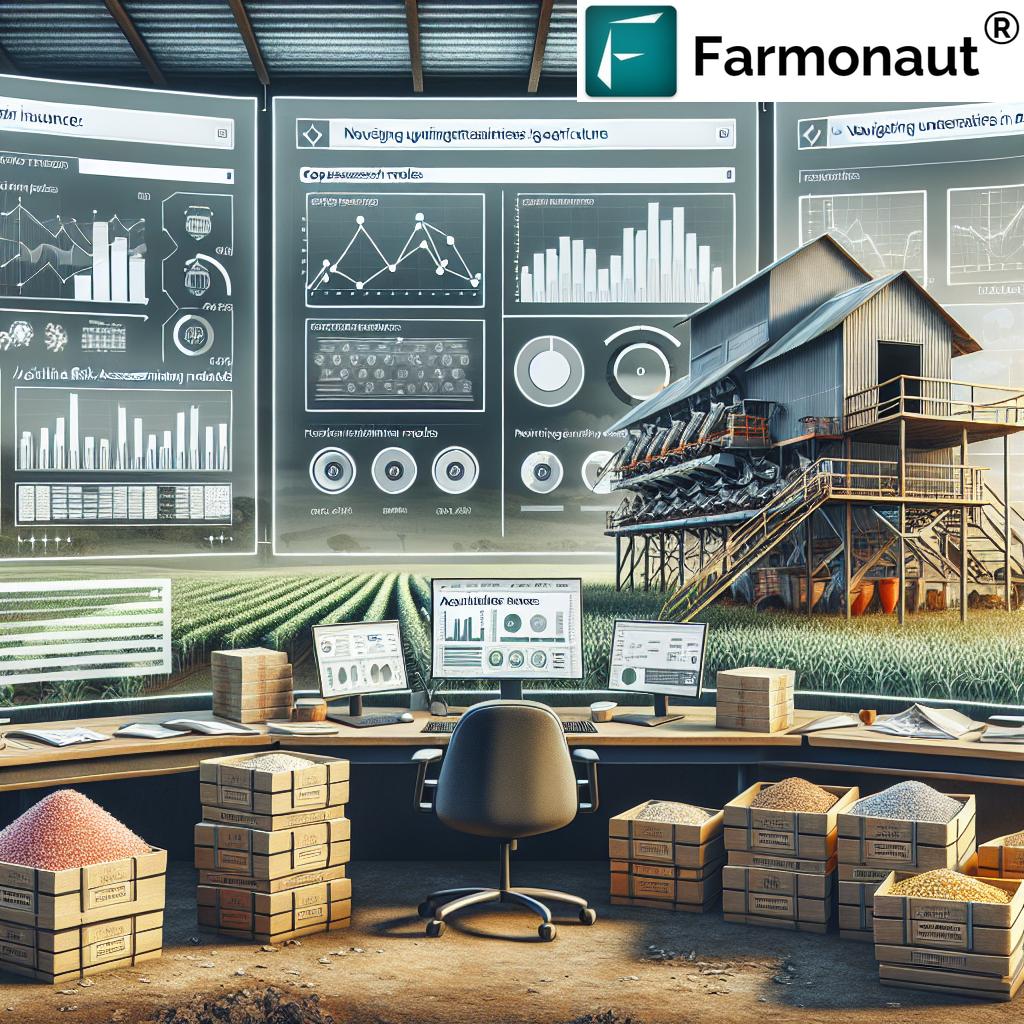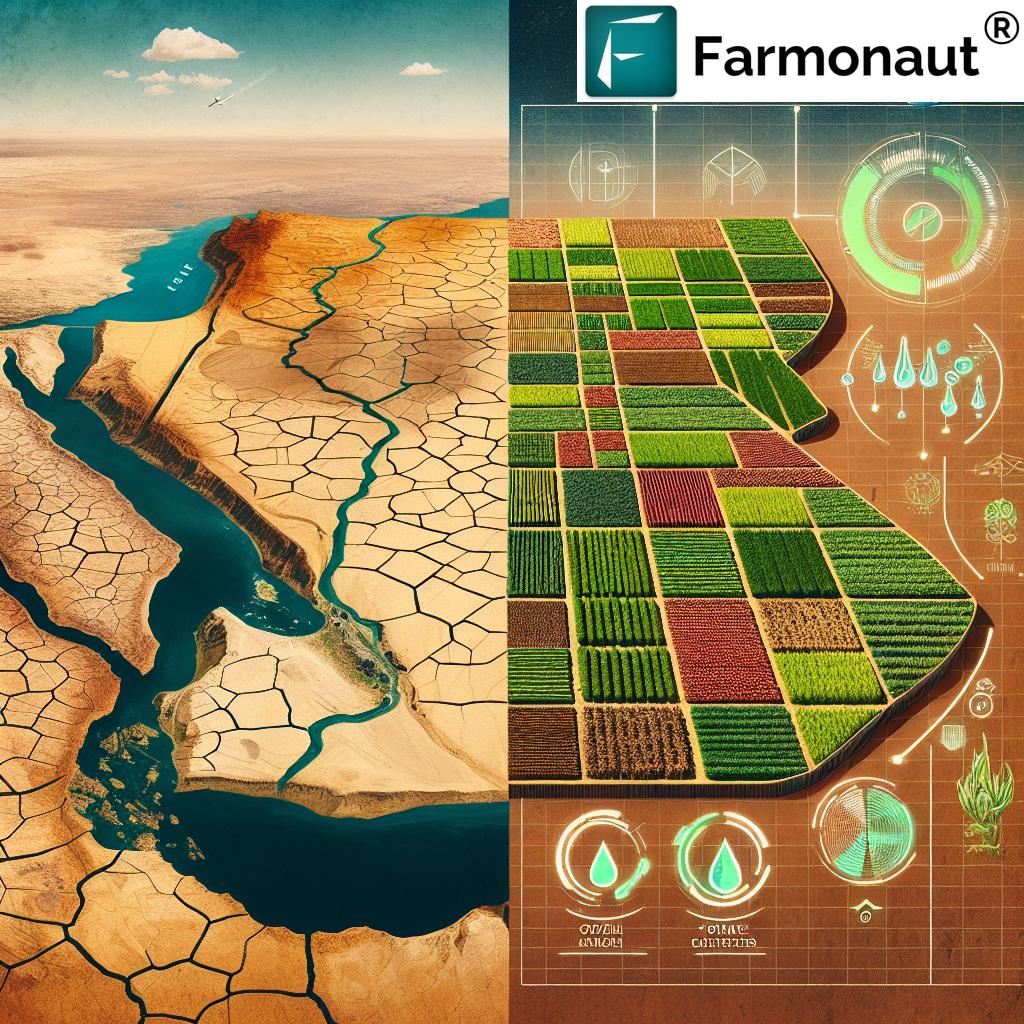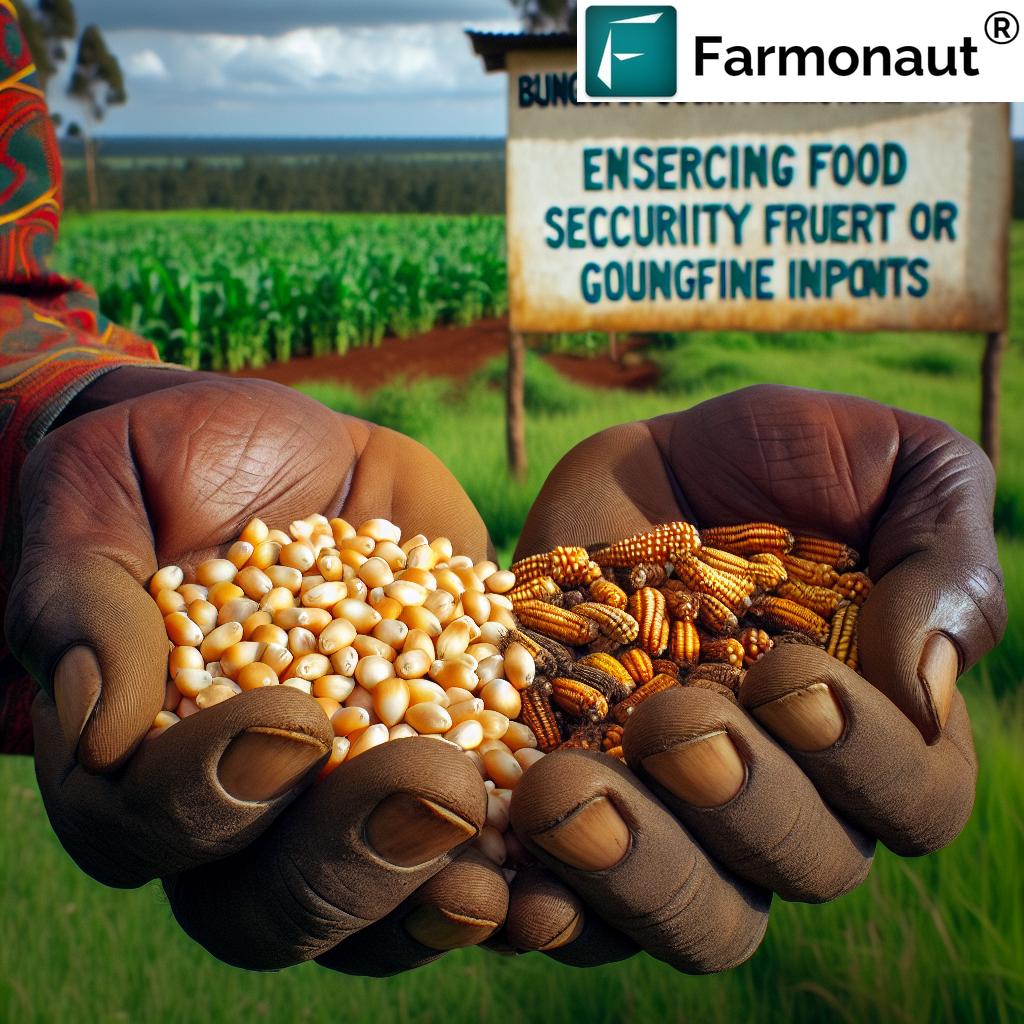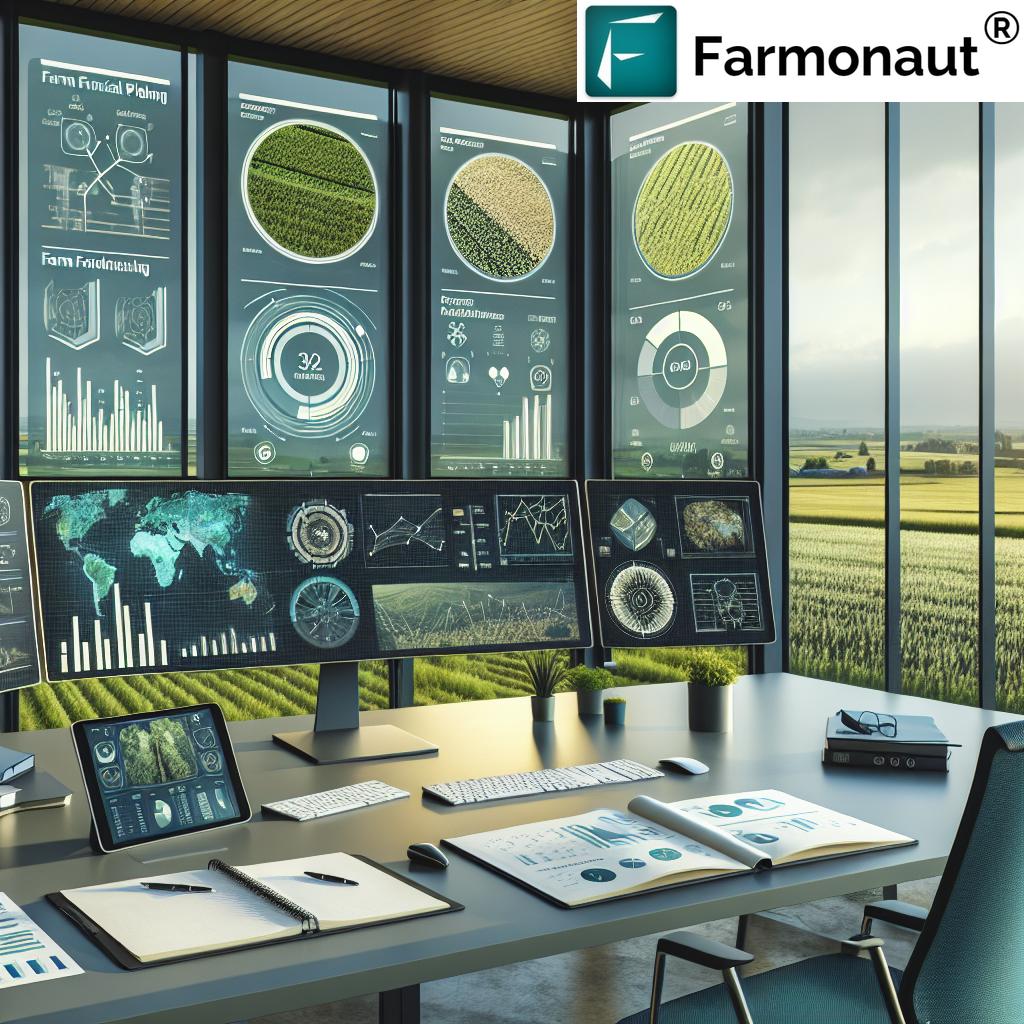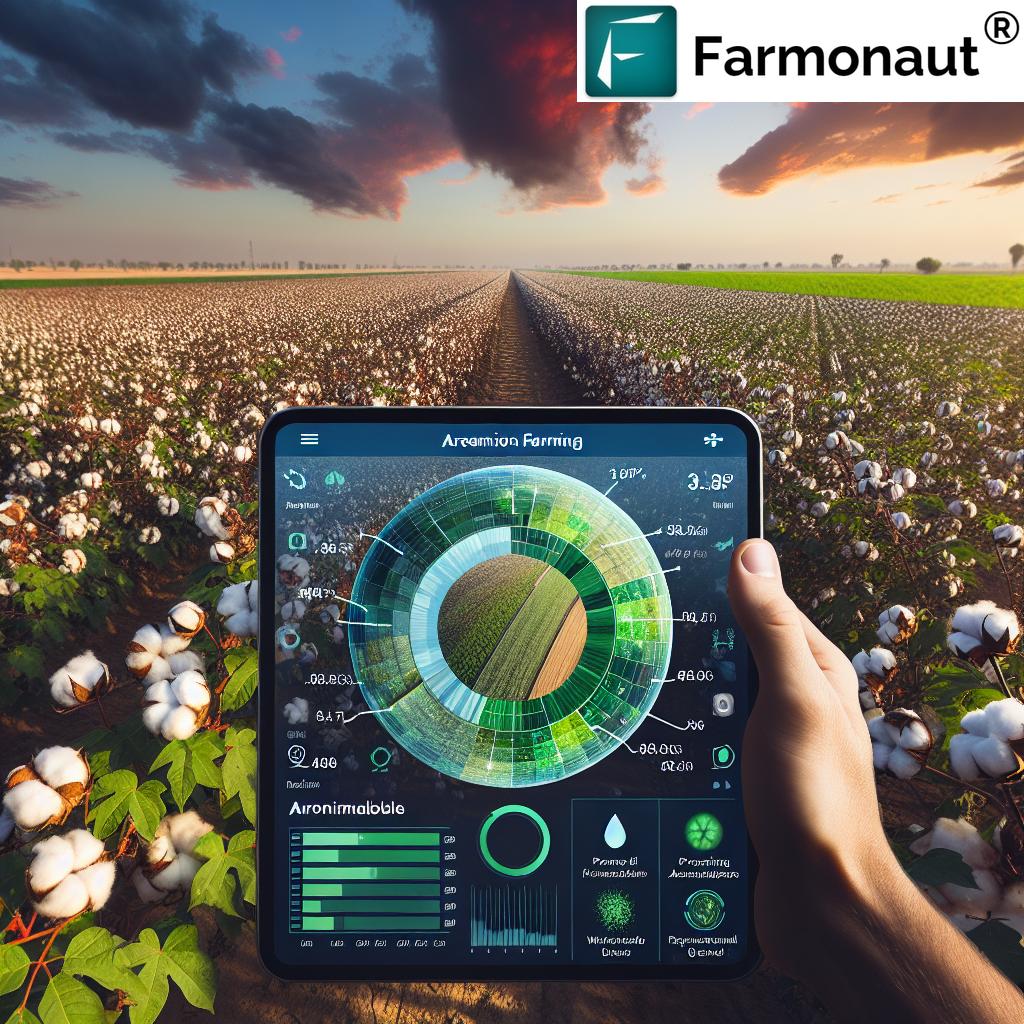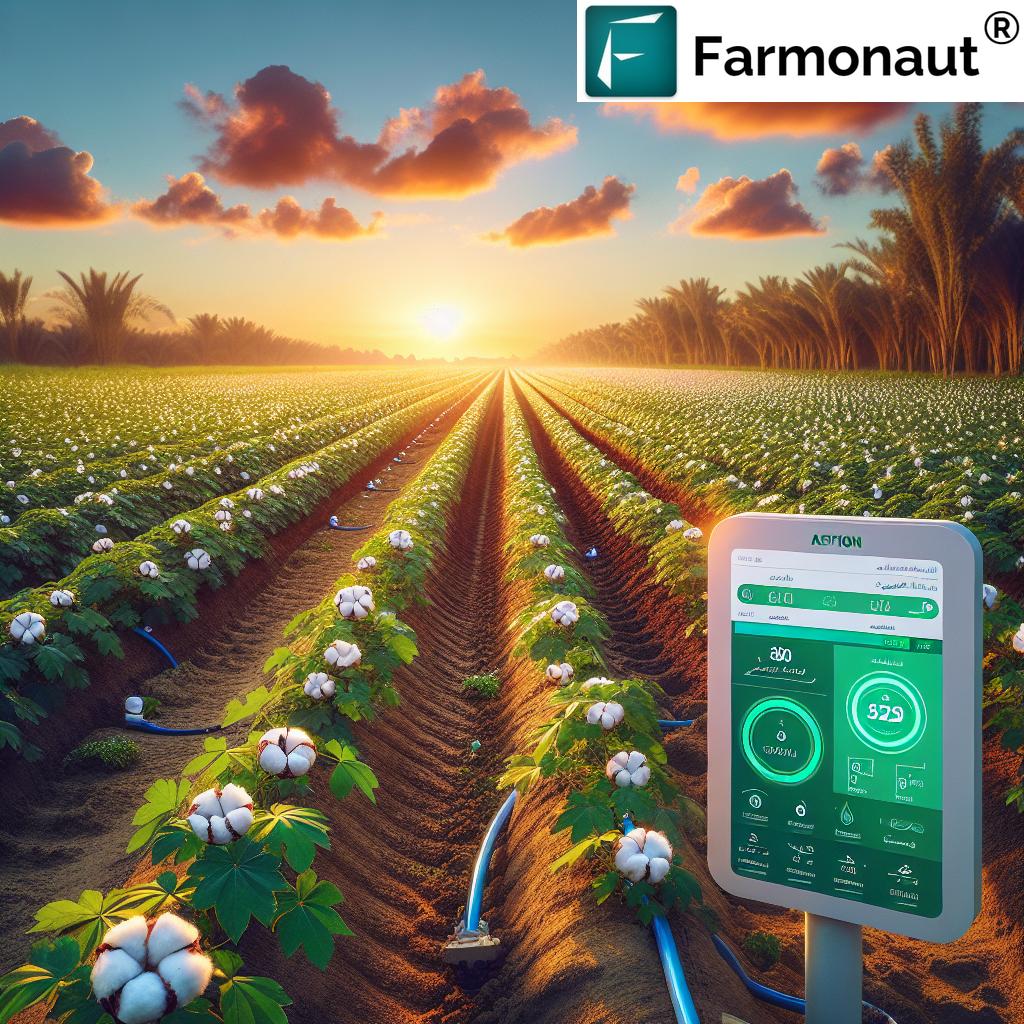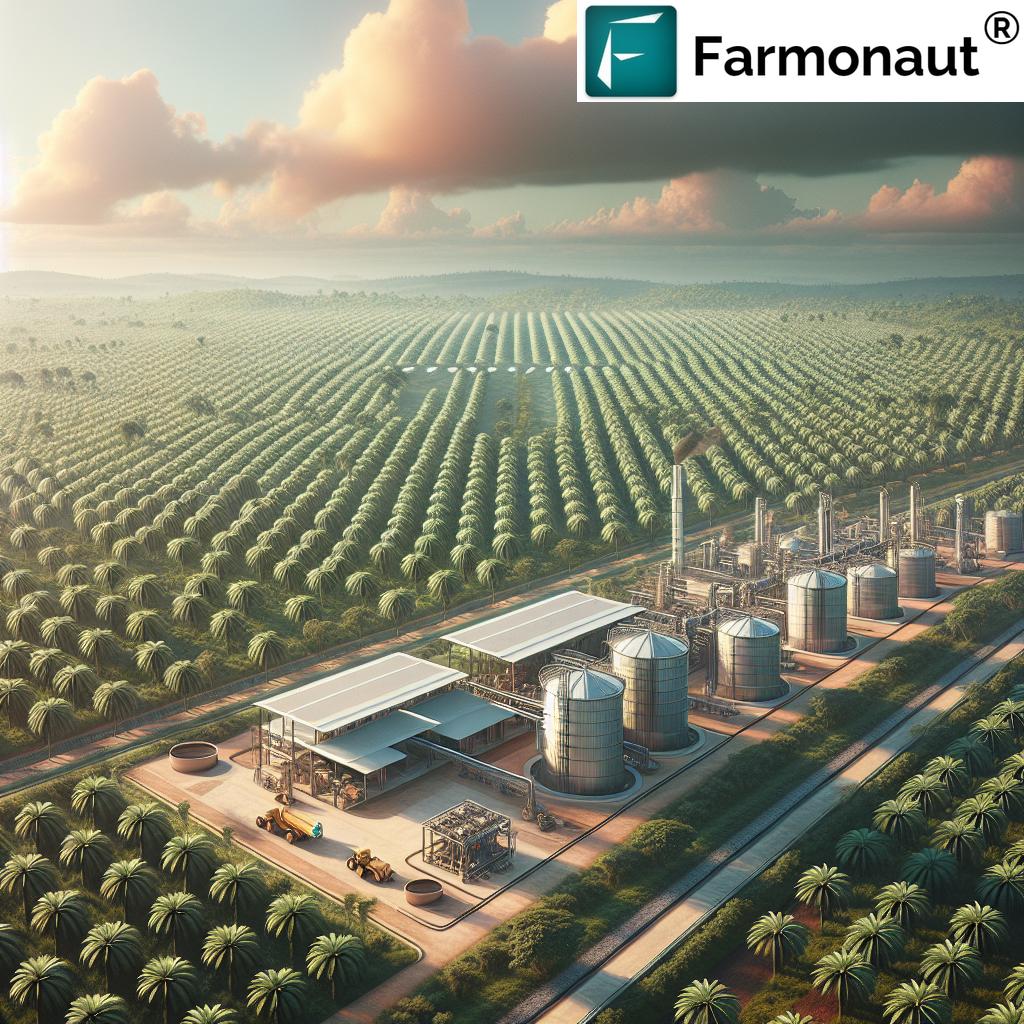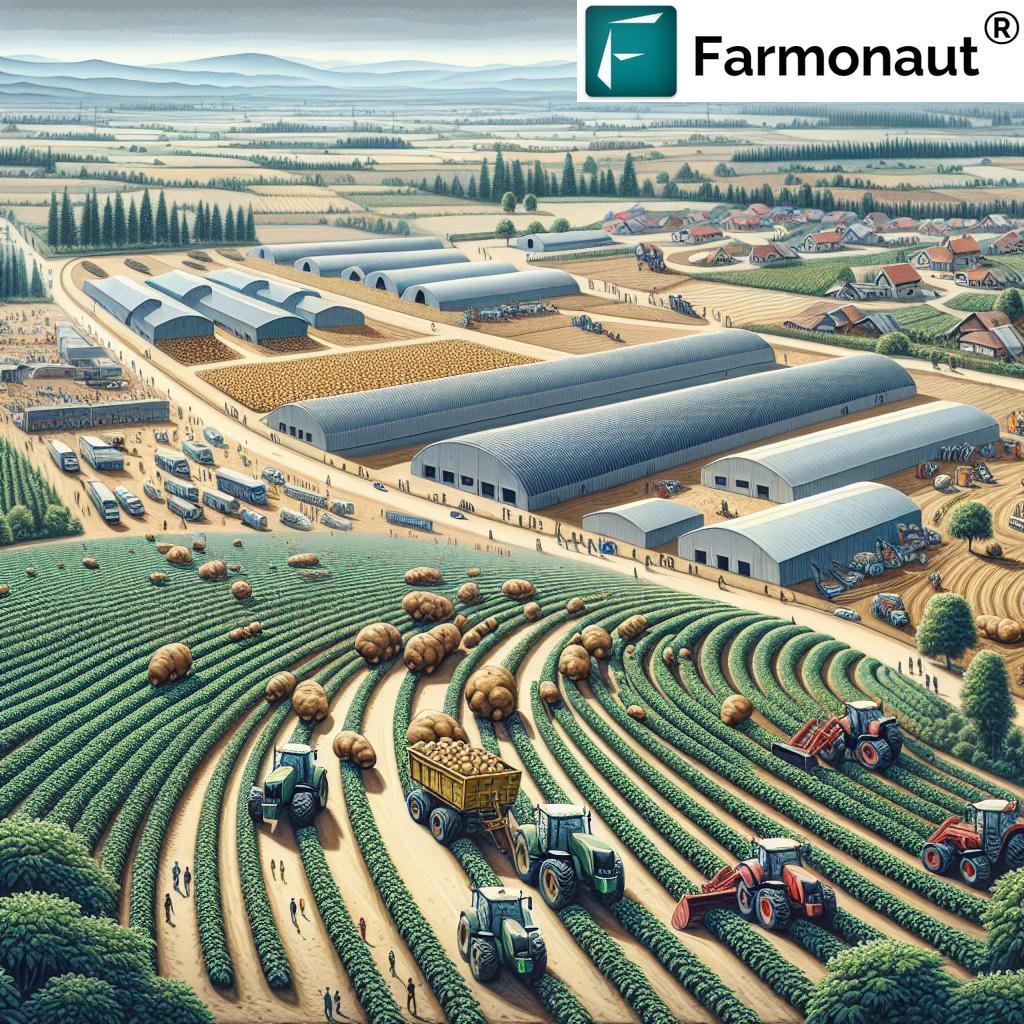Table of Contents
- Introduction: Agricultural Risk Assessment – A Comprehensive Overview
- Trivia: Liberian Tech-Driven Farms
- Understanding Types of Risks in Agriculture
- Agricultural Risk Assessment Techniques
- Technology in Agriculture Risk Management
- Effective Agricultural Risk Management Strategies
- The Farmonaut Advantage: Enhancing Agricultural Risk Assessment
- Comparative Risk Management Strategies Table
- Trivia: Resilient Liberian Farms
- 7 Liberian Farm Secrets for Improving Farm Resilience
- Access Farmonaut’s Precision Solutions
- FAQ: Agricultural Risk Assessment & Management in Liberia
- Conclusion: Paving the Way for Sustainable Liberian Agriculture
Agricultural Risk Assessment: 7 Liberian Farm Secrets!
“Liberian farms using tech-based risk assessment report up to 30% fewer crop losses annually.”
Agricultural Risk Assessment: A Comprehensive Overview
Agriculture, particularly in Liberia and across sub-Saharan Africa, serves as the backbone of our economies and food systems. Yet, this sector is inherently exposed to uncertainties that threaten productivity, farm income, and long-term sustainability. From unpredictable weather patterns and crop pests to price volatility and shifting government policies, the types of risks in agriculture are as varied as they are consequential.
In our collective pursuit of improved food security, profitability, and environmental health, mastering agricultural risk assessment is not a luxury—it is a necessity. Recognizing, analyzing, and actively managing uncertainties in farming empower us, the farmers, agribusinesses, and policy-makers, to deploy precisely crafted strategies that enhance resilience and sustainability throughout Liberia’s rich agricultural landscape and beyond.
Understanding Types of Risks in Agriculture
Thorough agricultural risk assessment begins with a deep understanding of the primary risks impacting farming systems. According to the United States Department of Agriculture (USDA), agricultural risks are traditionally placed in five core categories:
- Production Risk: Stemming from unpredictable weather, pests, diseases, and other environmental factors. These risks can affect both the quantity and quality of agricultural outputs (ers.usda.gov).
- Price or Market Risk: Involves uncertainties related to prices received for products and paid for inputs. Market fluctuations, global trade, and policy changes factor heavily into this risk (ers.usda.gov).
- Financial Risk: Linked to borrowed capital, debt obligations, and periods of low income or high interest rates (ers.usda.gov).
- Institutional Risk: Comes from government policies, regulations, and support programs that may alter agricultural operations.
- Human or Personal Risk: Emerges through issues of health, safety, labor availability, and management capability.
By categorizing and identifying risks at each stage of the value chain, we can allocate our attention and resources more effectively, targeting mitigation strategies where they are most needed.
Agricultural Risk Assessment Techniques: Powerful Tools for Managing Uncertainties in Farming
Assessing agricultural risks requires employing a mix of data collection methods and analytical tools that complement each other. Here are the key agricultural risk assessment techniques making waves in Liberia and worldwide:
- Data Collection Techniques: Gathering accurate and timely data is foundational. We use structured surveys, field monitoring, weather stations, and, increasingly, satellite imagery tools like those available through Farmonaut’s platform.
- SWOT Analysis: By listing our farm’s Strengths, Weaknesses, Opportunities, and Threats, we achieve a panoramic view of current vulnerabilities and areas for risk-reducing innovations.
- Scenario Planning: Developing “what-if” scenarios—like simulating impacts of pest outbreaks or market crashes—empowers us to pre-design robust risk management strategies.
- Statistical Models: Techniques such as regression analyses, time series forecasting, and Monte Carlo simulations help to quantify uncertainties and predict potential losses.
- Predictive Analytics in Agriculture: Leveraging advanced algorithms (AI, machine learning), predictive analytics transforms vast data sets into actionable insights—forecasting yields, price shifts, and pest risks.
The synergy between traditional methods (like farmer interviews) and high-tech approaches (like satellite remote sensing) forms the backbone of effective risk assessment in modern farms.
Technology in Agriculture Risk Management: The Revolution of Remote Sensing & Data Analytics
The era of technology-driven agricultural risk assessment has dawned. Adopting precise technology not only augments our decision-making processes but also ensures resilience amid climate swings and market volatility. Let’s explore how technological advancements are reinventing risk management strategies:
Remote Sensing and Satellite Imagery
- Satellite Monitoring: Satellite-based monitoring—such as the solutions offered by Farmonaut—provides real-time crop health analysis using NDVI, soil moisture data, and multi-spectral imagery for pinpointing early signs of drought, pests, or diseases (impact of environmental factors on agriculture).
- GIS Mapping: Geographic Information Systems (GIS) allow us to create detailed farm maps, identifying high-risk zones and tracking environmental conditions over time.
Discover more about Farmonaut’s technology for real-time crop health monitoring and see how satellite data can reduce both costs and risks:
Large-Scale Farm Management
AI-Based Advisory and Predictive Analytics
- AI-Driven Decision Support: AI platforms (like Farmonaut’s Jeevn AI) analyze weather, imagery, and on-farm data to recommend tailored risk mitigation strategies—be it changing irrigation schedules or preemptively spraying crops.
- Predictive Analytics in Agriculture: Predictive models harness historical data, satellite inputs, and real-time updates to forecast yield outcomes, pest risks, and even impending input price hikes.
Utilize Farmonaut’s API and developer docs to seamlessly integrate predictive analysis and weather-based monitoring into your digital agriculture solutions.
Blockchain Traceability and Resource Optimization
-
Blockchain-Based Traceability: With blockchain, every product’s journey is transparently tracked—from seed to market—ensuring quality, authenticity, and trust for both local and export markets.
Learn more: Farmonaut Traceability - Fleet and Resource Management: Modern fleet-tracking systems optimize logistics, reduce costs, and elevate safety and efficiency. For agribusinesses, see Farmonaut Fleet Management.
Carbon Footprint Tracking & Sustainability
-
Carbon Footprinting in Agriculture: Monitor, analyze, and reduce your farm’s environmental impacts—not just for compliance, but also for sustainable agriculture, resource-efficiency, and market preference.
Explore Farmonaut Carbon Footprinting for easy tracking and improvement. - Climate-Smart Agriculture: Leveraging satellite and AI predictions, we’re able to adopt climate-smart agriculture—practices that increase yield, reduce emissions, and protect our soils against erratic rainfall, floods, and drought.
Effective Agricultural Risk Management Strategies for Liberian Farms
Liberian agriculture faces unique challenges—from high precipitation to volatile market prices—requiring us to blend local wisdom with global innovations.
Here’s how we can mitigate critical risks and improve resilience:
- Diversification: Planting multiple crop varieties or integrating livestock diversifies our income streams and helps buffer against weather and price shocks.
-
Agricultural Insurance: Crop insurance and index-based insurance are invaluable for recovering from weather extremes, pest outbreaks, or price collapses.
In Liberia, the rise of digitally confirmed crop insurance solutions makes protection more accessible and fraud-resistant. - Climate-Smart Agricultural Practices: Using no-till methods, cover crops, rotational grazing, and organic mulching for sustainable, climate-resilient yield increases.
- Timely Market Intelligence: Tech tools deliver live pricing, allowing us to strategically time our product sales and purchases of inputs.
- Post-Harvest Loss Management: Advanced data and imaging help us target sources of post-harvest losses, such as spoilage or poor storage, and devise cost-effective remedies.
- Capacity Building and Training: Regular workshops and digital literacy sessions on risk management capacitate the entire farming community to better handle shocks.
Embracing these agricultural risk management strategies is essential for not just survival—but thriving—under the realities of climate change and evolving market conditions.
The Farmonaut Advantage: Next-Gen Agricultural Risk Assessment Technologies
Farmonaut leads the way in leveraging technology for agriculture risk management and real-time data-driven insights. By integrating satellite imagery, AI, and blockchain, Farmonaut enables:
- Real-Time Crop Health Monitoring: Get instant NDVI maps, soil moisture data, and pest-risk alerts directly in your web or mobile app—optimizing irrigation, fertilizer, and pest management.
- AI-Powered Advisory: Personalized crop management and risk analysis, delivered via the Jeevn AI system based on your farm’s unique conditions and goals.
- Secure Blockchain Traceability: Make your products stand out with verifiable, tamper-proof supply chain records—a huge boost for exports and consumer trust.
- Seamless Resource Management: Whether managing a single farm or a nationwide fleet, resource and logistics optimization are at your fingertips.
- Accessible Pricing: Farmonaut democratizes precision farming. No expensive hardware—just subscribe and receive world-class risk management tools across Android, iOS, or browser.
Check out Farmonaut’s feature suite and explore how each solution fits different agricultural enterprises—carbon footprinting, product traceability, crop loan and insurance, fleet management, or large-scale farm management.
Comparative Risk Management Strategies Table: Technology’s Impact on Liberian Agriculture
| Risk Factor | Traditional Assessment | Technology-Driven Approach (e.g., Farmonaut) |
Estimated Efficiency Improvement (%) | Real-World Example (Liberia) |
|---|---|---|---|---|
| Climate/Weather | Manual weather logs, visual sky observation | Satellite-based weather & soil moisture analysis, AI-driven risk alerts | 20-40% reduction in crop loss |
Liberian rice farms switching to satellite moisture tracking |
| Pests & Diseases | Physical field patrols, local knowledge | Real-time pest/disease NDVI anomaly detection using satellite imagery | 30-50% faster response |
Cocoa plantations using AI anomaly alerts |
| Market Prices | AM/FM radio, word-of-mouth, weekly town visits | Live price updates & predictive alerts via mobile/web apps | 15-25% improved timing of sales |
Liberian palm oil farmers timing sales with app updates |
| Post-Harvest Loss | Manual inspection, subjective estimation | Image-driven loss quantification, blockchain-based product traceability | 15-35% reduction in waste |
Cassava producers using digital inventory |
| Labor Management | On-site head counts, paper attendance | Fleet tracking, remote attendance via apps | 10-30% productivity gain |
Liberian rubber estates improving labor allocation |
“Over 60% of resilient Liberian farms adopt innovative risk management strategies for sustainable agriculture.”
7 Liberian Farm Secrets for Improving Farm Resilience
Drawing from the latest risk assessment reports and successful strategies in Liberia, here are seven powerful secrets that can help any farm outlast uncertainties and thrive:
- Harness Data with Technology: Liberian farms leveraging satellite and sensor data enjoy a critical edge in predicting weather, pests, and disease risks. Regular digital monitoring means less guesswork, fewer surprises, higher yields.
- Early Warning is Everything: AI-based predictive systems (including Farmonaut’s Jeevn AI) enable farmers to receive actionable alerts—before issues spiral into costly losses. Timely action saves money and preserves crop quality.
- Adopt Diversified Cropping and Mixed Farming: Growing maize alongside legumes or integrating poultry with rice paddies ensures that if one product fails, others sustain income and household nutrition.
- Strengthen Supply Chain Traceability: Using blockchain platforms gives you and your buyers confidence—reducing loss, proving authenticity, and ensuring better market access.
- Pursue Smart Resource Management: Fleet tracking and resource management software help keep logistics efficient, cut operating costs, and improve reliability, especially for larger or cooperative farms.
- Prioritize Financial Risk Coverage: Satellite-verified crop loan and insurance applications eliminate fraud and accelerate payouts from banks and insurers. This means farmers can recover faster from uncontrollable hazards.
- Commit to Sustainable Practices: Monitoring and lowering your carbon footprint isn’t just good for the environment—it boosts your marketability, meets rising consumer standards, and attracts international buyers and funding.
Access Farmonaut’s Precision Solutions for Every Farm
Are you ready to improve farm resilience with affordable, leading-edge solutions? Farmonaut’s subscription-based platform covers smallholders, agribusinesses, and government bodies—scalable for any Liberian enterprise.
Affordable Precision Agriculture: No expensive hardware. Get started online and watch your risk management precision soar!
FAQ: Agricultural Risk Assessment & Management in Liberia
What is agricultural risk assessment and why is it important in Liberia?
Agricultural risk assessment is the practice of identifying, analyzing, and evaluating various risks—production, market, financial, institutional, and human—faced by farmers and stakeholders. In Liberia, where weather fluctuations, pests, and price instability are commonplace, robust risk assessment is crucial for improving resilience and ensuring farm profitability and sustainability.
Which technologies boost risk management in Liberian agriculture?
Key technologies include satellite imagery, AI-based advisory systems, blockchain traceability, real-time crop health monitoring, and predictive analytics in agriculture. These collectively enable early-warning systems, better financial planning, and lower post-harvest losses.
How can technology help manage pests and diseases?
Modern approaches using satellite data and AI allow for rapid detection of anomalies (signs of pest/disease outbreaks) in crop canopies, alerting farmers before they become large-scale issues. Farmonaut’s web and mobile apps offer such monitoring capabilities.
Is crop insurance available through Farmonaut?
Yes, Farmonaut supports crop loan and insurance verification through satellite-based monitoring. This helps reduce fraudulent claims, facilitates faster payouts, and improves farmer access to financial protection. See details here: Crop Insurance.
Does Farmonaut’s platform support large cooperative or government-led farm management?
Absolutely. Farmonaut’s modular, scalable platform serves the needs of cooperatives, agribusinesses, and government agencies. Features include centralized monitoring, resource optimization, and data-driven support for policy implementation. Learn more: Large-Scale Farm Management.
Can I track my farm’s environmental footprint with Farmonaut?
Yes, with integrated carbon footprint tracking, you can monitor and reduce your environmental impact while improving compliance and marketability. Details: Carbon Footprinting.
Conclusion: Paving the Way for Sustainable Liberian Agriculture
Mastering agricultural risk assessment is transformative for Liberia’s agriculture sector. By embracing advanced risk assessment techniques and cutting-edge agricultural technology platforms like Farmonaut, we can:
- Identify and manage uncertainties before they become threats
- Boost productivity, profitability, and sustainability for farms of all sizes
- Deploy agricultural risk management strategies that fit our environment and markets
- Elevate Liberia’s food security and position our farmers for global competitiveness
We are no longer at the mercy of unpredictable forces. With the right combination of local intelligence and globally proven technology, Liberian agriculture can accelerate into a future that is robust, resilient, and abundantly rewarding for all.



